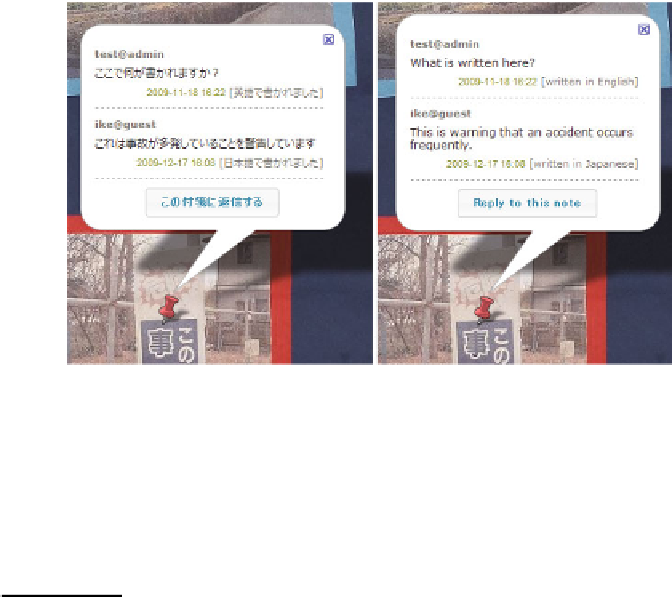Information Technology Reference
In-Depth Information
A messages input from a student is translated into multiple languages, so multiple
messages in different languages need to be stored. To this end, we utilize a qTranslate
function
5
, which is a plug-in of WordPress. We can handle multi-lingual messages by
composing a message in the following format.
<
!
: Language code of language 1
−−
>
a message in language 1
−−
<
!
:
−−
><
!
: Language code of language 2
−−
>
a message in language 2
−−
−−
<
!
:
−−
>
c
<
!
: Language code of language n
−−
>
a message in language n
−−
−−
<
!
:
−−
>
−−
For example, a message for greeting is stored as follows.
<
!
:en
−−
>
Hello.
<
!
:
−−
><
!
:ja
−−
>
B
<
!
:
−−
><
!
:fr
−−
−−
−−
−−
−−
−−
>
Bon jour.
<
!
:
−−
>
−−
When a message is displayed in CoSMOS, the specific message is extract from the
multi-lingual one depending on the user language. If the code of the user language is
French (fr), “Bon jour.” is extracted and shown on the page by using the qTranslate
function.
As shown in Fig. 2, a note is actually displayed depending on the user language in
CoSMOS.
'LVSOD\LQJLQ-DSDQHVH
'LVSOD\LQJLQ(QJOLVK
Fig. 2.
Note shown in multiple languages
Machine translation services often produce incorrect translations. To cope with this
problem, the system displays back-translation [10], so the student can check the quality
of translation, and fix his/her input message if necessary. Back-translation is to reversely
translate the translated result in the target language into one in the input language. If the
input text and its back-translation are similar in meaning, the translation is estimated to
5
http://www.qianqin.de/qtranslate/

